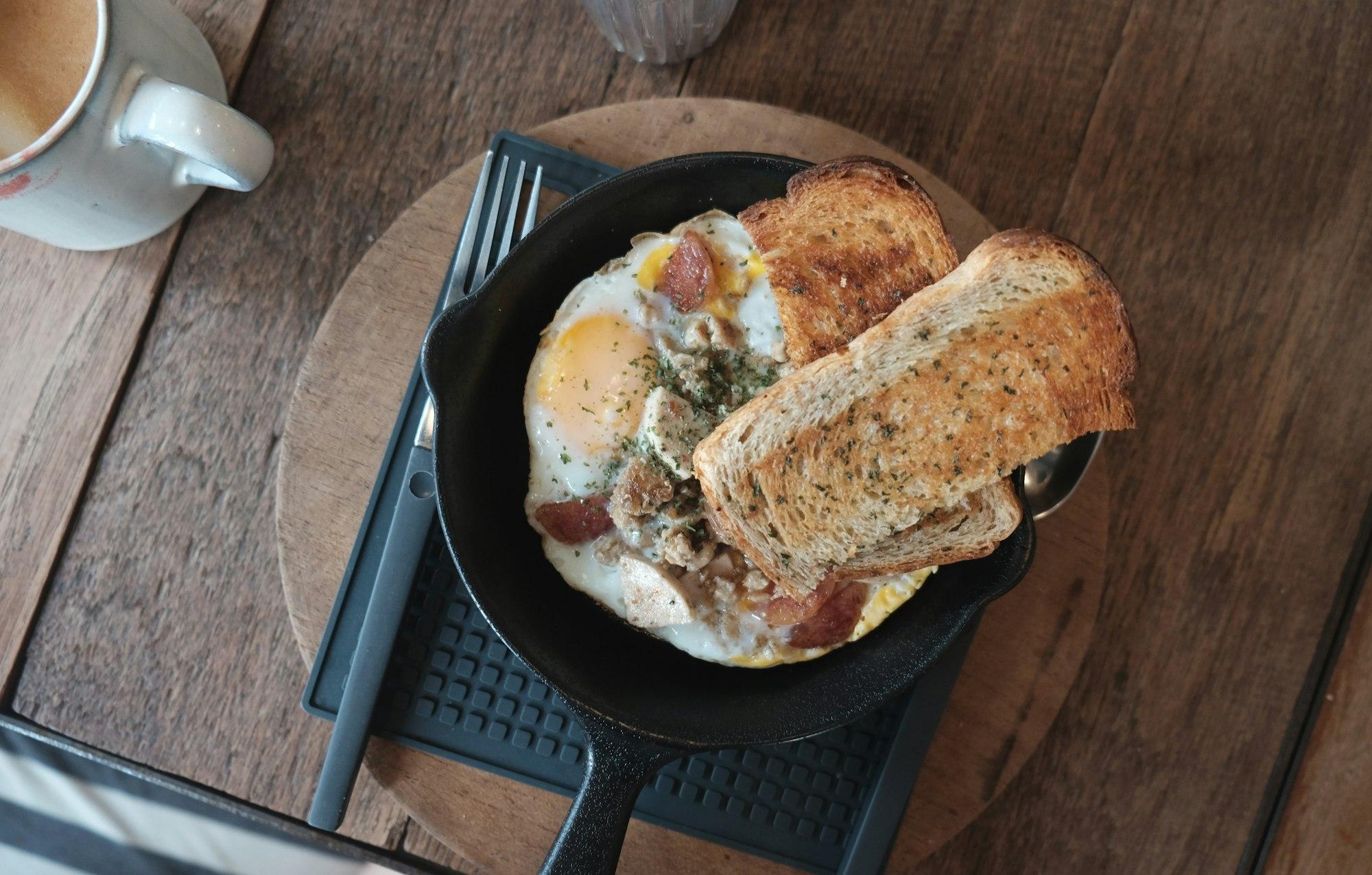What is a Trivet?
Ever wondered what a trivet is? Discover the different types and uses of trivets, and how they can add both function and style to your kitchen.

Have you ever found yourself carefully placing a hot pot on your kitchen counter, only to wonder if there's a better way to protect surfaces from heat damage? Enter the trivet: a small, often overlooked kitchen accessory that plays a crucial role in both functionality and decor. But what exactly is a trivet, and why should you consider adding it to your kitchen arsenal? Let's dive into the world of trivets and discover their multifaceted uses, types, and tips for selecting the perfect one for your home.
The Essential Role of Trivets
At its core, a trivet serves a simple yet essential purpose: to protect surfaces from heat damage. Whether it's a dining table, countertop, or any other surface, trivets act as a barrier between the hot bottom of a pot, pan, or serving dish and the surface you're placing it on. But there's more to trivets than just their practical use.
Protection and Preservation
Trivets are designed to withstand high temperatures, safeguarding your valuable countertops and tables from burns, scratches, and heat marks. By distributing the heat evenly across their surface, trivets ensure that no single area of your furniture or countertops suffers from direct exposure to hot cookware.
Moreover, the use of trivets extends beyond just heat protection. They also prevent water rings and condensation marks from cold dishes, making them a versatile tool in maintaining the pristine condition of your surfaces.
Decorative Appeal
Trivets are not just functional; they're also a fantastic way to add a touch of style and personality to your kitchen and dining area. Available in a wide range of materials, designs, and colors, trivets can complement your home's decor or serve as a statement piece that sparks conversation at the dinner table.
From elegant cast iron designs to modern silicone options, the aesthetic possibilities with trivets are endless. They can be seamlessly integrated into any kitchen style, whether you're aiming for a rustic, contemporary, or minimalist look.

Types of Trivets
When it comes to choosing a trivet, the variety can be overwhelming. Each type of trivet offers unique benefits and aesthetics, catering to different needs and preferences.
Material Matters
The material of a trivet not only affects its appearance but also its functionality and durability. Common materials include metal, silicone, wood, and ceramic, each with its own set of advantages.
Metal trivets, often made from cast iron or stainless steel, are known for their durability and heat resistance. Silicone trivets offer flexibility and a non-slip surface, making them ideal for handling a variety of dish sizes. Wood trivets bring a natural, warm aesthetic to the table but require more care to prevent damage from excessive heat. Ceramic trivets, on the other hand, provide a decorative touch with their intricate designs and colors, though they may be more prone to cracking under extreme temperatures.
Design Diversity
The design of a trivet goes beyond its material composition. From simple, functional designs to elaborate, artistically crafted pieces, the choice of trivet design can reflect your personal style and the ambiance you wish to create in your dining space.
Expandable trivets, magnetic options, or those with interlocking pieces offer versatility and adaptability for various dish sizes and occasions. Meanwhile, trivets with handles or hanging loops provide convenience for storage and handling.
Additional Considerations for Trivet Selection
When selecting a trivet, there are several additional factors to keep in mind to ensure you choose the most suitable option for your needs.
Size and Shape
Consider the size and shape of the trivet in relation to the cookware you typically use. A larger trivet may be necessary for accommodating bigger pots and pans, while a compact trivet could be sufficient for smaller dishes or serving platters.
Additionally, the shape of the trivet can impact its stability and how well it fits different types of cookware. Circular trivets are versatile and work well with round pots, while rectangular trivets may be better suited for rectangular or oval-shaped dishes.
Heat Resistance
Ensure that the trivet you choose offers adequate heat resistance for the types of cookware you use. Some materials, such as silicone, excel in heat resistance and can withstand high temperatures without warping or melting, providing reliable protection for your surfaces.
For intense heat situations, such as placing a hot cast iron skillet directly from the oven onto the trivet, opt for materials like cast iron or stainless steel that can handle extreme temperatures without damage.
Multi-Purpose Functionality
Consider whether you prefer a trivet that serves a single purpose, such as protecting surfaces from heat, or one that offers additional functionality. Some trivets come with built-in features like built-in coasters for condensation, making them versatile tools for various dining scenarios.
Trivets with reversible designs, such as a flat surface on one side and a grooved surface on the other for catching spills, provide added convenience and utility in the kitchen.

Choosing the Right Trivet
Selecting the perfect trivet involves considering both its practicality and its contribution to your home's aesthetic. Here are some tips to guide you in making the right choice.
Assess Your Needs
Consider the primary use of your trivet. Will it be used daily for hot pots and pans, or do you need something more decorative for occasional use? Understanding your needs will help narrow down the material and design choices.
Also, think about the types of cookware you frequently use. Heavier pots may require sturdier materials like metal, while lighter dishes could be well-accommodated by silicone or wood trivets.
Complement Your Decor
Trivets offer a unique opportunity to enhance your kitchen and dining area's decor. Look for designs and materials that complement your existing style or add a contrasting element for a pop of visual interest.
Don't be afraid to mix and match trivets for a dynamic table setting. A combination of materials and designs can add depth and character to your dining experience.
Maintenance and Care
Consider the care requirements of different trivet materials. Metal and silicone trivets are generally low-maintenance and dishwasher safe, making them convenient for frequent use. Wood and ceramic trivets may require more careful handling and manual cleaning to preserve their appearance and functionality.
By choosing a trivet that aligns with your lifestyle and maintenance preferences, you'll ensure its longevity and continued appeal in your home.
Conclusion
Trivets are more than just practical kitchen tools; they're an expression of style and a testament to thoughtful hosting. Whether you're safeguarding your surfaces from heat or adding a decorative touch to your table setting, the right trivet can elevate your dining experience. By understanding the different types of trivets and considering your needs and decor, you can select a trivet that not only serves its purpose but also enhances the beauty and functionality of your home.
So, the next time you reach for that hot pot or pan, remember the humble trivet and the blend of practicality and style it brings to your kitchen and dining spaces.
Before you make your next trivet purchase, why not ensure you're getting the best deal? Visit Spoken to compare prices and discover if that stylish trivet you've been eyeing is available at a more affordable price elsewhere. With Spoken's comprehensive price comparisons and detailed product insights, you can shop with confidence, knowing you're choosing a trivet that offers both quality and value. Don't just protect your surfaces—protect your wallet too with Spoken.
Quick facts
What do you use a trivet for?
A trivet is used to protect surfaces from hot pots, pans, and dishes by providing a heat-resistant barrier.
What is the difference between a hot pad and a trivet?
A hot pad is usually made of fabric and used for handling hot items, while a trivet is typically metal or wood, designed to hold hot dishes off surfaces.
Why is it called a trivet?
The word "trivet" comes from the Latin "tripedem," meaning three-footed, as early trivets were often three-legged stands.
What can you use instead of a trivet?
You can use a thick kitchen towel, cutting board, or an oven mitt as a substitute for a trivet.

Dane Hurtubise
Co-founder & CEO of Spoken
Dane Hurtubise is the Co-founder & CEO of Spoken. He has led two venture-backed companies and is a two-time Y Combinator alum. Prior to Spoken, Dane sold his previous company, Parklet, to Greenhouse Software where he served as VP of Platform and Partnerships. An avid runner, cyclist, and Pilates enthusiast, Dane holds a BS in Electrical and Computer Engineering from the University of Texas at Austin.
Read more

